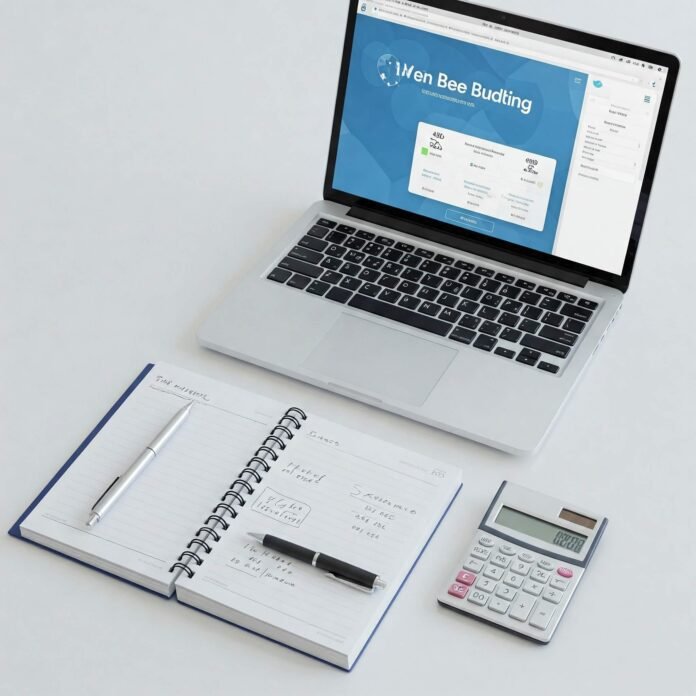Managing your finances can feel overwhelming, but the right budgeting tools can make it a breeze. Whether you’re saving for a dream vacation, paying off debt, or simply trying to keep your spending in check, these tools help you stay financially organized. In this article, we’ll explore the top budgeting tools that simplify money management, offer actionable insights, and empower you to achieve your financial goals.
Why Budgeting Tools Are Essential for Financial Organization
Budgeting tools streamline the process of tracking income, expenses, and savings. They provide real-time insights, automate tedious tasks, and help you make informed financial decisions. According to a 2023 survey by Statista, 65% of Americans who use budgeting apps report feeling more in control of their finances. With the right tool, you can transform chaos into clarity.

Top Budgeting Tools to Transform Your Finances
Here’s a curated list of the best budgeting tools to keep you financially organized, complete with their standout features and ideal use cases.
1. YNAB (You Need A Budget) – Best for Goal-Oriented Budgeting
YNAB is a fan-favorite for its proactive approach to budgeting. It encourages users to “give every dollar a job,” ensuring your money aligns with your priorities. With features like goal tracking and detailed reports, YNAB is perfect for those serious about financial organization.
- Key Features:
- Real-time expense tracking
- Customizable budget categories
- Syncs with bank accounts for seamless updates
- Best For: Users who want to plan ahead and achieve specific financial goals.
- Price: $14.99/month or $99/year (free 34-day trial).
- Outbound Link: YNAB Official Website
Real-World Example: Sarah, a freelance designer, used YNAB to save $5,000 for a new laptop by assigning every dollar to her savings goal, cutting unnecessary subscriptions along the way.
2. Mint – Best Free Budgeting Tool
Mint is a free, user-friendly app that excels at expense tracking and financial organization. Its intuitive dashboard provides a snapshot of your spending, bills, and savings, making it ideal for beginners.
- Key Features:
- Automatic transaction categorization
- Bill payment reminders
- Credit score monitoring
- Best For: Budgeting newbies looking for a free, all-in-one solution.
- Price: Free.
- Outbound Link: Mint Official Website

3. PocketGuard – Best for Overspending Prevention
PocketGuard helps you avoid overspending by showing how much “safe-to-spend” money you have after bills and savings. Its simplicity makes it a great choice for those who want quick insights into their budget tracking.
- Key Features:
- “In My Pocket” feature for disposable income
- Custom spending limits
- Debt payoff planner
- Best For: Users who struggle with impulse purchases.
- Price: Free basic plan; Premium at $7.99/month.
- Outbound Link: PocketGuard Official Website
4. Goodbudget – Best for Envelope Budgeting
Goodbudget brings the classic envelope budgeting system into the digital age. It’s ideal for couples or families who want to share budgets and stay financially organized without linking bank accounts.
- Key Features:
- Virtual envelopes for expense categories
- Syncs across devices for shared budgeting
- Debt tracking tools
- Best For: Collaborative budgeting without bank sync.
- Price: Free basic plan; Plus at $8/month.
- Outbound Link: Goodbudget Official Website

How to Choose the Right Budgeting Tool for You
With so many budgeting tools available, picking the right one depends on your needs. Consider these factors:
- Ease of Use: Do you want a simple interface (Mint) or a more hands-on approach (YNAB)?
- Cost: Free options like Mint are great, but paid tools like YNAB offer advanced features.
- Features: Look for tools that match your goals, like debt tracking (PocketGuard) or shared budgeting (Goodbudget).
- Syncing: Decide if you want automatic bank syncing or manual entry for privacy.
Actionable Takeaway: Test free trials or basic plans before committing to a paid tool. Most apps offer 14-30 days to explore features.
Tips to Maximize Your Budgeting Tool’s Potential
To get the most out of your budgeting tools, follow these expert tips:
- Review Regularly: Check your budget weekly to catch overspending early.
- Set Realistic Goals: Start with small savings targets to build momentum.
- Use Alerts: Enable notifications for bill due dates or low balances.
- Combine Tools: Pair a budgeting app with a savings app like Acorns for a holistic approach. (Acorns Official Website)
Data-Driven Insight: A 2024 study by Forbes found that users who review their budgets weekly are 40% more likely to meet their financial goals.
Start Your Journey to Financial Organization Today
The right budgeting tools can transform how you manage your money, helping you stay financially organized and stress-free. Whether you choose YNAB for goal-driven budgeting, Mint for free tracking, PocketGuard for spending control, or Goodbudget for shared budgets, these tools empower you to take charge of your finances.
Ready to get started? Pick one of these tools, set up your budget, and watch your financial confidence soar. Which tool are you excited to try? Let us know in the comments!




